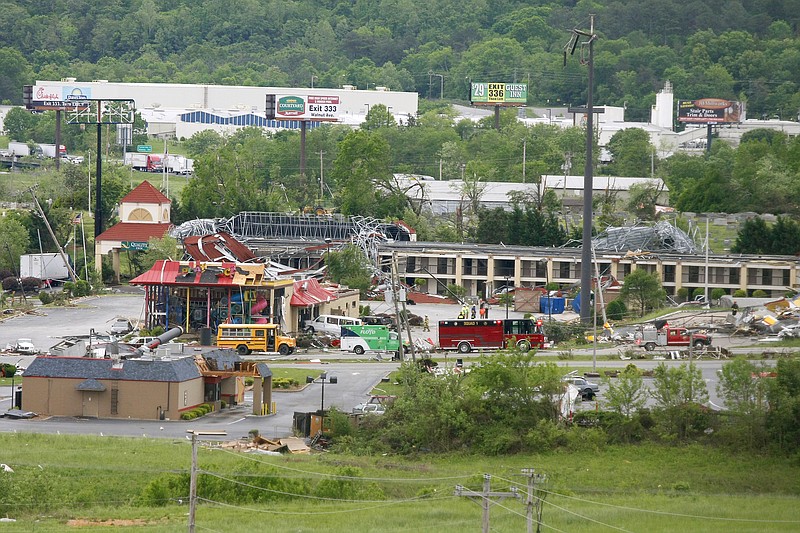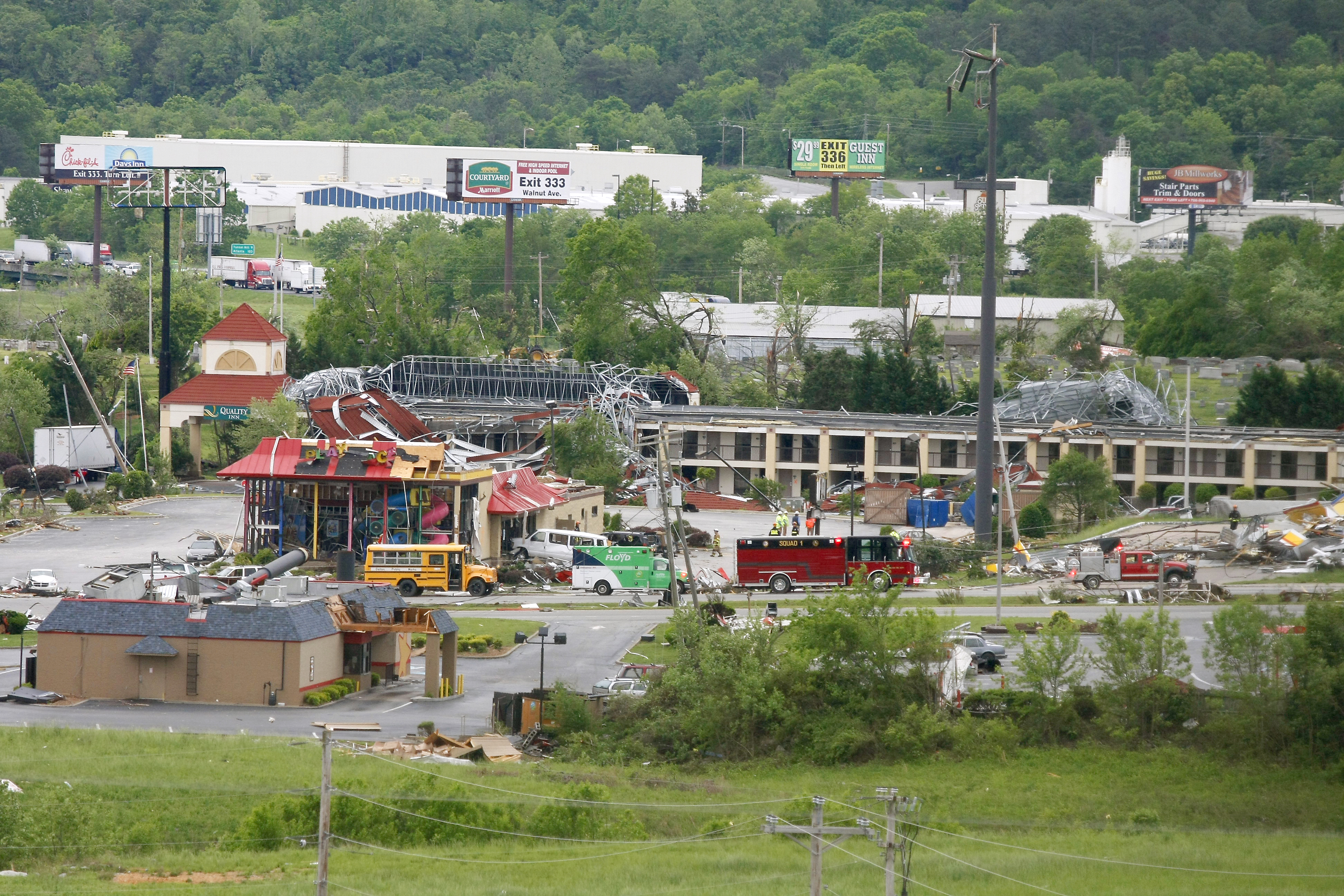Federal disaster relief in tri-state area Ten area counties have received more than $31 million in disaster assistance from the Federal Emergency Management Agency. Here are the number of applications received from individuals, the amount of money awarded in individual assistance and how much federal money has been obligated to local government agencies in public assistance. County Applications Funds awarded Federal funds Alabama Jackson 2,449 $2.39 million $1.34 million DeKalb 2,811 $4.58 million $218,010 Georgia Catoosa 1,013 $920,837 $5.25 million Dade 866 $1.08 million $2.83 million Walker 602 $323,141 $812,090 Tennessee Bledsoe 112 $464,739 $155,419 Bradley 1,624 $1.26 million $2.45 million Hamilton 2,437 $1.68 million $5.17 million McMinn 158 $135,884 $184,8121 Rhea 66 $330,165 $175,291 Source: Federal Emergency Management Agency About the storms NOAA's National Weather Service ranks April 2011 as the most active tornado month on record, with 753 tornadoes across the U.S. There were an estimated 364 fatalities. The April 27 "Super Outbreak" spawned four intensely destructive EF5 tornadoes and launched an immediate response from local, state and federal agencies; voluntary, faith-based and community groups; the private sector; and the public. About the funds FEMA received disaster registrations from more than 119,000 individuals and families in Alabama, Kentucky, Mississippi, Georgia, Tennessee. Nearly $257 million in federal disaster assistance was distributed to survivors in the form of grants and low-interest recovery loans as of Oct. 20. FEMA sent nearly $211 million to state agencies for public recovery and rebuilding projects. Because of the April 2011 disasters, more than $115 million in federal funds was set aside for local and state projects designed to save lives, protect property and save money in the future. Projects include community storm shelters, flood-prevention measures and building retrofits. Source: Federal Emergency Management Agency
Six months after the April tornadoes, more than $31 million in federal funds has been funneled to 10 of the hardest-hit counties in the tri-state area through Oct. 11 to help cover uninsured storm losses, according the Federal Emergency Management Agency.
The money, allocated through FEMA, includes payments to individuals and funds promised to local and state governments for public assistance. It does not include Small Business Administration loans or funds from other federal agencies, such as grants from the U.S. Department of Labor to pay workers involved in recovery efforts.
Applications for individual assistance closed months ago, although some money still is being paid for rental housing and in appeals on denied applications, FEMA officials said.
Just more than $13 million in individual assistance for rent, rebuilding and recovery has been paid so far, with more than 12,000 applications filed.
Hard-hit DeKalb and Jackson counties in Alabama had the highest number of applications for individual assistance and received the most federal dollars.
Dade County in Georgia and Bradley and Hamilton counties in Tennessee had the next-highest payments, with residents in each county receiving more than $1 million.
Although such FEMA funding to people and families is the best-known aspect of the federal disaster assistance program, more than half the federal dollars went to state and local governments. That part of the program provides up to 75 percent of costs for local government cleanup and recovery efforts. State and local governments must cover the other 25 percent.
So far, more than $18 million has been approved, though not necessarily paid, to government agencies in the 10 counties.
Local governments have up to six months to seek money for debris removal and emergency protective measures. They have 18 months to seek federal funding for rebuilding public property such as roads, bridges, water facilities and public buildings.
As the recovery continues, most of FEMA's efforts will involve working with local communities in long-term recovery efforts and helping them prepare for future disasters, FEMA spokesman Carr McKay said.
FEMA representatives meet every month with Alabama survivors still living in FEMA-supplied mobile homes or in rental properties paid for by FEMA, McKay said.
FEMA officials also are working with local government and communities to help shape decisions on how the rebuilding process moves forward.
"It is locally led and locally driven, but we help in whatever way we can," McKay said.
McKay, who is an Alabama native, called the first six months of recovery "tremendous" and "amazing."
"When you think about how widespread the damage was and sheer amount of destruction - I've never seen anything like it in Alabama," he said. "It is pretty astounding how the people of Alabama have come together as a community. FEMA is just a part of the process; state and local government, survivors and volunteers have all been willing to do what needed to be done."
OTHER FEDERAL FUNDS
Other federal dollars have helped in different ways.
The Georgia Department of Labor and the Northwest Georgia Regional Commission Workforce Investment Board received a $5 million National Emergency Grant to create temporary jobs for laid-off workers.
The grant money can be used to hire and train laid-off workers to clean and repair public property, according to the Georgia Department of Labor. The grant also will be used to hire staff for public and nonprofit agencies helping in the relief effort, including public assistance agencies, as well as counselors to help the grieving and traumatized.
The Dade County school system has used money it received through the grant to hire 17 people for six months, Superintendent Shawn Tobin said. The employees have helped do maintenance work, data entry and inventory related to cleaning up after a tornado damaged Dade County Elementary School.
The county also has hired more than 20 people under the program, Tobin said.
"It's been wonderful for us," he said. "For these people to have a job and to see how quickly their attitude changes - it's a great program."
The program also provides money for training if the school system decides to hire the temporary workers full time, which Tobin hopes will happen.
Sam Hall, spokesman for the Georgia Department of Labor, said not all of the grant funds have been used and local agencies can apply through their local department of labor offices.

